Search Results
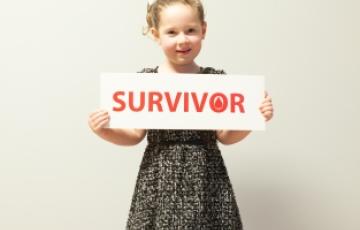
Callie
At age 2, Callie started having trouble walking after a fall in early November 2015. After seeing a pediatric orthopedist for weeks and then a pediatric neurologist for an MRI of her brain and spine, we finally got an answer in January as to what was going on with our little girl.
An x-ray of her right leg and blood work showed that Callie had acute lymphoblastic leukemia (ALL). Fortunately, after a month of intense chemotherapy, she was in remission. She had been in physical rehab three times a week to regain the ability to walk on her own.
Meghan
My name is Meghan, and I am 33, almost 34 years old. In September 2016, I was diagnosed with chronic myelomonocytic leukemia (CMML) secondary to my brain cancer treatment. I noticed a lot of bruising on my legs along with occasional nose and gum bleeding. My oncologist did a bone marrow biopsy, and I was given the news the next day that I had CMML. The only option was a stem cell transplant. My sisters were tested, but they were not a perfect match, so I was put on Be the Match.
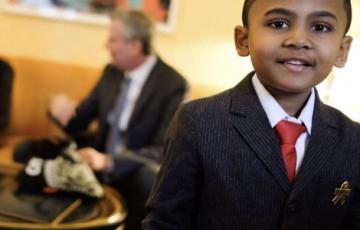
King
King has a rare combination of a blood cancer called leukemia (high risk) and G6PD which is an incurable, lifelong blood disorder. His treatment plan is 3 1/2 years of daily chemotherapy. He is up to 75 pills per month, and this does not include intravenous or spinal chemo.
Unfortunately, as he gets older, the amount of chemo and medication he has to take will increase. He is three years into treatment, and has experienced several severe complications throughout this time.

Luis
I used to donate blood at least three times a year. I did it as a way of helping others and never realized it would one day lead to me being diagnosed with myelodysplastic syndrome. But that’s exactly what happened in 2006, when a case of anemia kept me from donating blood that year.

Kathie & Dave
Dave and I have been a part of The Leukemia & Lymphoma Society (LLS) since 1998. I can’t even remember how many Team In Training events we’ve done. We have both done at least one a year if not more since Michael, our son, was diagnosed.
This picture explains it all. Michael was 5 years old when he was diagnosed and of about 10 kids going through treatment with him at the time, I think only he and another are still here today. I know the statistics should be better but that’s the reality for us.
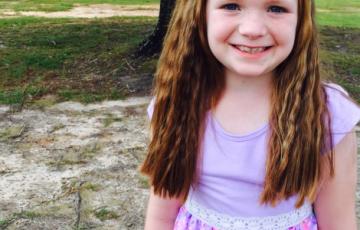
Charlie
At two and a half years old, Charlie was diagnosed with acute lymphoblastic leukemia (ALL).
Soon after being diagnosed, she underwent surgery to insert a port-a-cath so she could receive chemotherapy treatments and make route blood work easier on her. Chemotherapy treatments were extremely hard on her little body and she refused to walk. She had neuropathy from the treatments.
Sarah
On October 19, 2023, I went to urgent care for a cough that wouldn't go away. Turns out, it was a little more than a cough. A large mass in my chest was causing pneumonia. Two weeks later, I finally had a name for the mass ― primary mediastinal B-cell lymphoma (PMBCL). One thing that was very important to me early on in my cancer journey was fertility preservation. I knew that the chemotherapy I would get would put me at risk for infertility, so I advocated for myself and got an early referral to the reproductive and endocrinology (REI) clinic near me.
Reid
I was diagnosed with chronic lymphocytic leukemia (CLL) in May 2022. It was a rough time with 10 blood transfusions, weeks in the hospital, and learning a new “normal”.
But that is not my story.
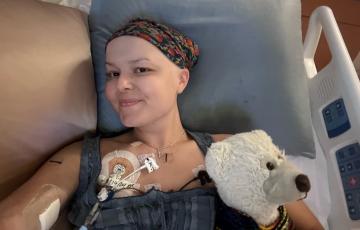
Olivia
This past week marked 100 days in remission post-transplant. I am 27 and was diagnosed about a year ago on November 8, 2023, with T-cell precursor acute lymphoblastic leukemia (ALL). Anyone who is familiar with this disease has an idea of what I've been through. This included numerous spinal taps, intense treatments, clinical trials, the horrible reactions and side effects of chemo and radiation, and lastly, the pure pain and exhaustion of a bone marrow transplant. I've spent over 100 days in the hospital these past nine months and the past 100 days at home recovering.
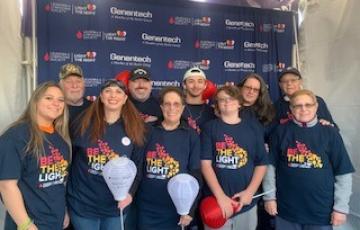
Lisa
My name is Lisa, I am 50 years old. On March 5, 2012, my life forever changed. I went from being Lisa, wife to John, mother to Tristan (now 14), and stepmother to John (now 35) to Lisa, acute myeloid leukemia (AML) patient.

Sofia
Sofia’s story starts in November 2022. Actually, it starts on March 17, 2019, when she was born. She has been my fierce, independent, strong-willed little girl from the get-go. Once she started walking, she was an unstoppable force. Contrary to her cautious, older brother, Sofia seemed fearless. She loved to climb to the top of the playground structure meant for kids twice her age. She loved gymnastics and took after Mommy with her love of the bars, anything she could hang or climb on.
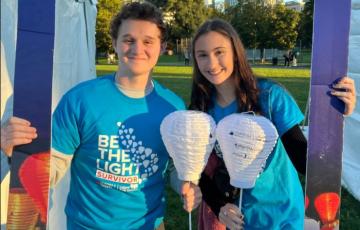
Sophia
I was diagnosed with acute myeloid leukemia (AML) one month before finishing my freshman year of high school. It was shocking and devastating to me and my whole family. I had to leave school, be hospitalized, and begin intense chemotherapy immediately.

Amanda
"He was selfless, unbelievably selfless," said Amanda about her father, Andrew. "He did everything for everybody. He worried enough for our family plus more. And never showed it. He worked extremely hard to provide us with everything we could possibly need."
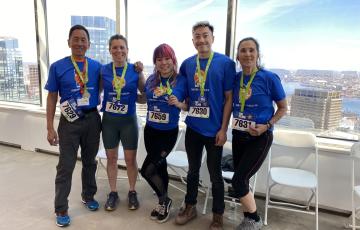
Tristan
I live in Colorado but grew up in Massachusetts and am an elite rock climber. I've traveled worldwide to climb and was the 2015 collegiate national champion. In April 2022, I was bouldering by myself and hit my shoulder on a rock behind me. Falls happen as frequently as a baseball player may swing a bat while climbing. This fall was nothing out of the ordinary except my shoulder was bruised far worse than I would expect from how hard I hit it, growing to the size of my hand by the next day. I remember looking at it initially and thinking, "Geez, I hope that's not leukemia."
Blood Cancer and Treatment Options
Treatment OptionsAfter your child is diagnosed with a blood cancer, you will work with members of the healthcare team to determine the best treatment plan. Treatment options vary depending on the patient's diagnosis, age, overall health, and other factors. Your child’s treatment plan might include
Signs and Symptoms
The most common symptom of Hodgkin lymphoma is one or more enlarged (swollen) lymph nodes. The enlarged lymph node may be in the neck, upper chest, armpit, abdomen or groin. The swollen lymph node is usually painless.
Other signs and symptoms of Hodgkin lymphoma may include
Follow-Up Care
Follow-up medical care is important for every Hodgkin lymphoma patient. Follow-up care helps the doctor monitor you to see if disease has recurred or relapsed, or to see if more treatment is needed. Talk to your doctor about how often to have follow-up visits and what laboratory tests, scans, or other imaging you need. It is important to get a record of your cancer treatment including the drugs you received so that your doctor can follow up on specific long-term effects that may be associated with your treatment.
Side Effects
Before undergoing treatment, patients should talk with their doctor about potential side effects. Drugs and other therapies can prevent or manage many side effects.
The side effects of treatment for myelofibrosis (MF) will depend on many factors, including the type of treatment and dosage, the age of the patient and coexisting medical conditions. Therapy may induce
Milliman Report
The Leukemia & Lymphoma Society (LLS) advocates for improved access to medications for patients.
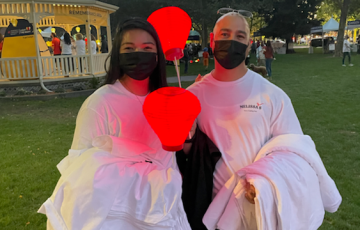
Grace
Volunteering for an organization was part of my senior capstone in the Spring of 2021. I wanted to volunteer for an organization that was for the long term and meaningful to me. One of my best friends, who is also my cousin, was diagnosed with acute myeloid leukemia (AML) in 2020. I felt so helpless and also didn't know anything about AML, so I turned to LLS to educate myself. LLS is an integral factor and I wanted to do my part. I became a story volunteer, where I had the opportunity to interview and speak with other volunteers and supporters.
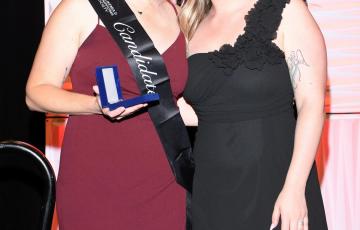
Janel
Throughout my childhood, my grandmother instilled in me the importance of helping those in need and gave generously to various charities and organizations. Her unwavering dedication to serving others inspired me to continue her legacy and give back to my community.

Marie and Miguel
Miguel was diagnosed with non-Hodgkin lymphoma (NHL) in early 2017. He was an active, healthy man his entire life, so this diagnosis came as a total shock. Both he and his wife didn't know what to expect or what the outcome would be and were both beyond devastated. After surgery, chemotherapy, numerous procedures, and hospital stays, Miguel and his wife were thrilled to hear the doctors say he had no evidence of disease as of late 2017.
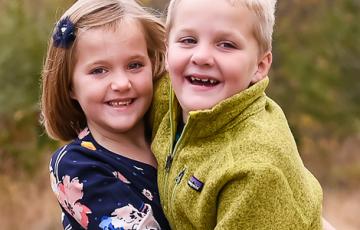
Auden
Eight-year-old Auden was diagnosed with T-cell acute lymphoblastic leukemia (ALL) in May 2015 – one month after him and his twin sister, Emery, celebrated their third birthday.
Immediately, Auden underwent aggressive treatment causing him to have blood stream infections, anaphylactic reactions, kidney stones and broken bones, just to name a few. But he kept a positive attitude through it all and Emery has been by his side, cheering him on at every stage of his cancer journey.
Auden’s treatment continued until August 2018, and today, he is proud to say he is cancer-free!

Molly
Molly was just 2 years old when diagnosed with acute lymphoblastic leukemia (ALL). We noticed a few petechiae on her back and went to see her pediatrician. Two days later she was having surgery to have a mediport placed and starting chemotherapy.
The first few months were horrible. She lost the ability to walk or even sit up due to the steroids she took daily. She was a zombie and didn't talk or smile. It was so sad to watch her so lifeless. Often times we cried and cried and felt helpless.